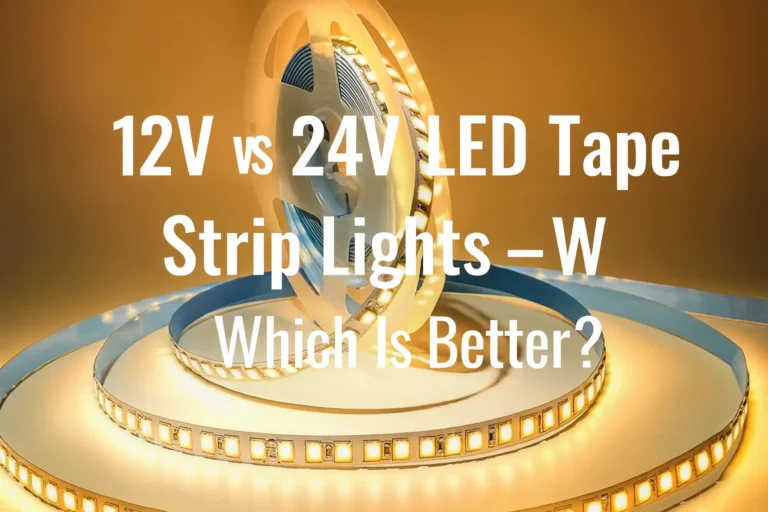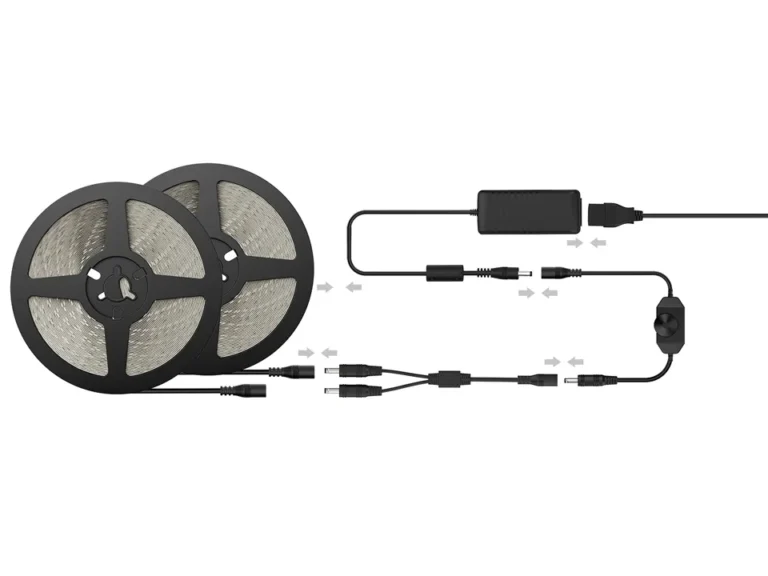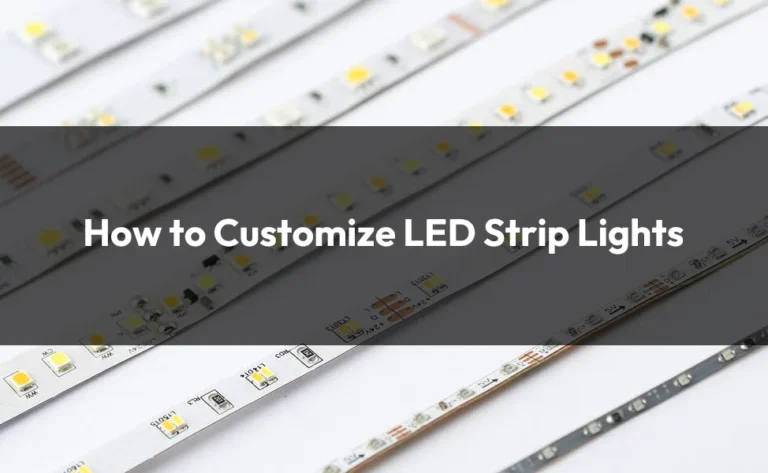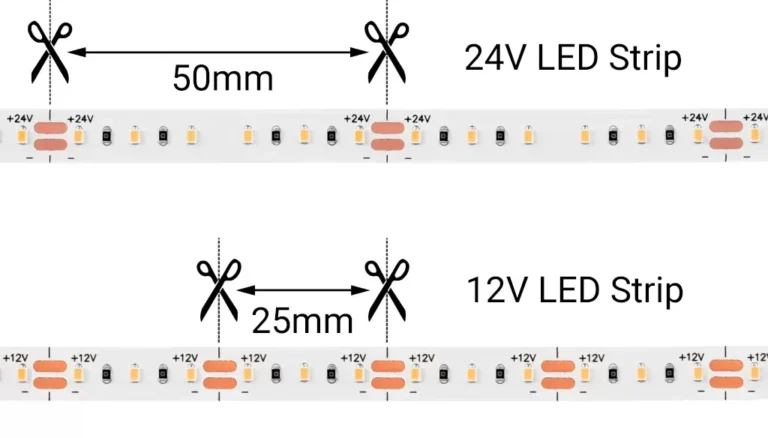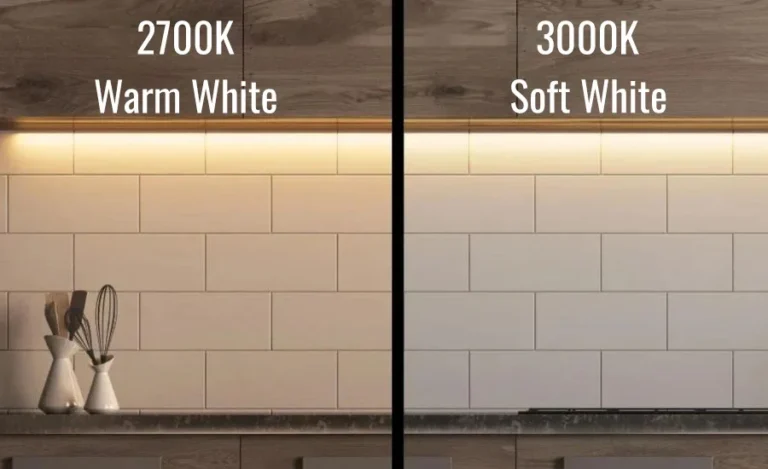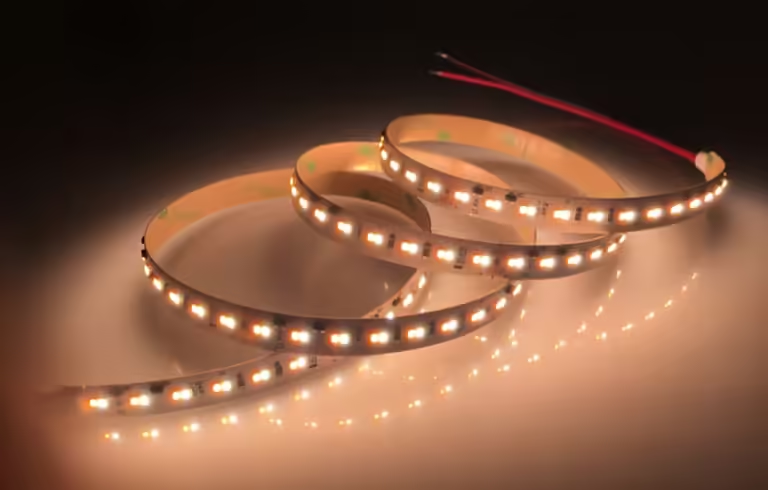Introduction
In LED strip lighting installations, voltage selection is often underestimated, yet it directly impacts brightness consistency, energy efficiency, and long-term maintenance costs. Many installers have experienced frustrating situations—LED strips dimming halfway through a run, or frequent power feeds needed after installation. In most cases, these issues are caused by choosing the wrong voltage system: 12V, 24V, or 48V. For a deeper comparison between the two most common voltages, see our full guide: 12V vs 24V LED Strip Lights – How to Choose.
Choosing the right LED strip voltage is crucial for preventing voltage drop—a loss of voltage that happens when electrical current travels through the strip, causing uneven brightness and wasted energy. Higher voltage systems reduce current for the same power output, which minimizes voltage drop and heat buildup, especially over long runs.
For example, 12V LED strips offer high flexibility and are ideal for short-run DIY projects; 24V LED strips strike a great balance between performance and cost for medium-length runs; while 48V LED strips excel in long-distance installations and large-scale engineering projects. This guide will break down voltage basics, performance differences, and best-use scenarios—helping you choose the right LED strip voltage for any lighting project with confidence.

Understanding LED Strip Voltage
When selecting the LED strip voltage, it’s important to understand the relationship between voltage and the maximum run length for LED strip lights.
For constant voltage LED strips, a higher voltage means less current is needed to deliver the same power, which helps reduce voltage drop and maintain consistent brightness across the entire length of the strip.
Typical specifications:
12V LED strips: Maintain stable brightness up to about 5 meters (16 feet); beyond this length, noticeable dimming may occur.
24V LED strips: Commonly support runs of around 10 meters (33 feet), with some high-quality options reaching up to 15 meters.
48V LED strips: Can run 15–20 meters (50–65 feet) or more; when paired with a constant current LED strip system, lengths of 30–40 meters (100–130 feet) or longer are achievable.
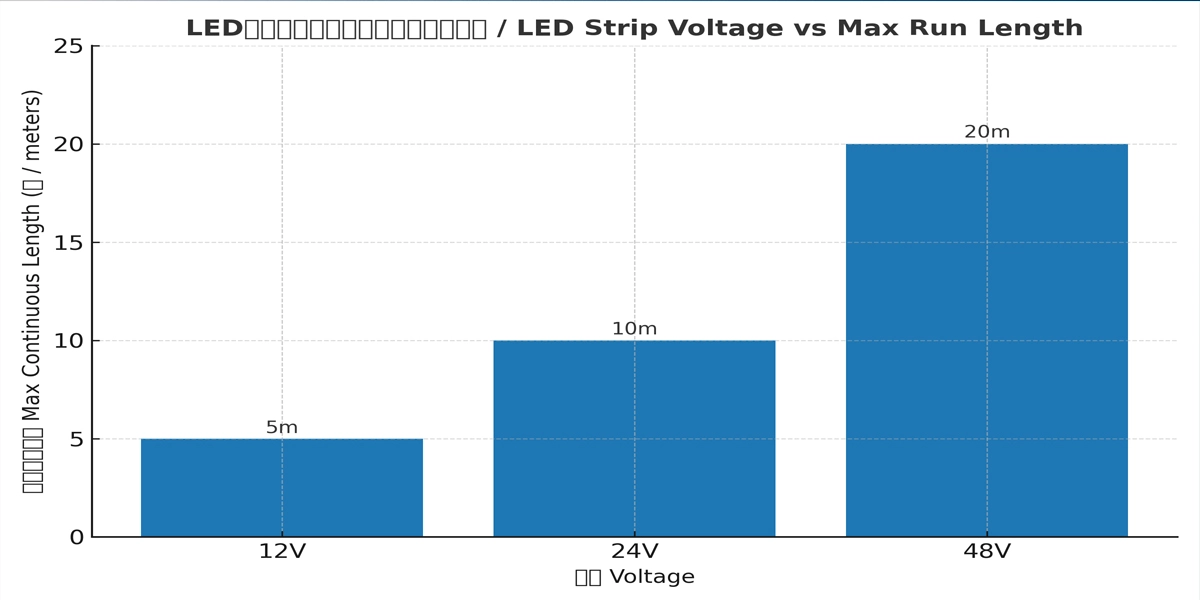
Another key concept is constant voltage vs. constant current:
Constant voltage LED strips (such as 12V, 24V, 48V) use a fixed voltage power supply and are simple to install and control, but are more prone to voltage drop over long distances.
Constant current LED strips provide a stable current output, ensuring uniform brightness and color temperature across extended lengths—ideal for large-scale projects requiring maximum performance and consistency.
By understanding these fundamentals, you can choose the correct LED strip voltage that balances installation length, brightness consistency, wiring complexity, and overall cost, ensuring both efficiency and visual quality.
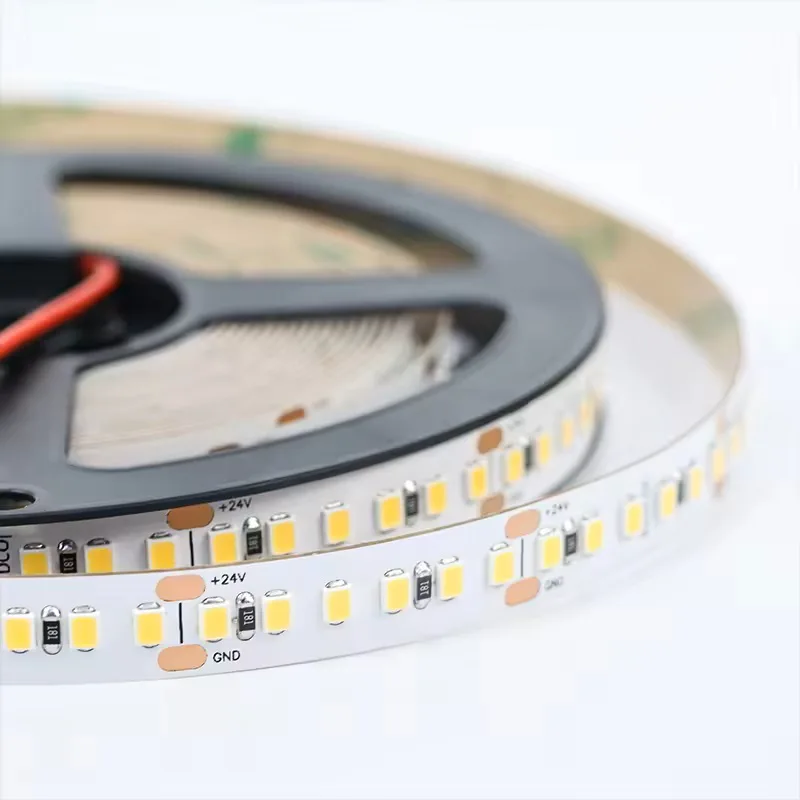
SMD2835 LED Strip Light
Main Model: FQX08T120C
LED QTY per Meter Option: 60/72/120/128/140
PCB Width Option: 6mm/8mm/10mm
Color Option: 2700K/3000K/4000K/5000K/6500K
CRI Option: 80/90
Input Voltage: DC12V/DC24V
Power per Meter: 6W/8W/9.6W/12W/14.4W/19.2W
Efficiency: 100–200 lumen/watt
IP Grade Option: IP20/IP54/IP65/IP67/IP68
Warranty: 5 years
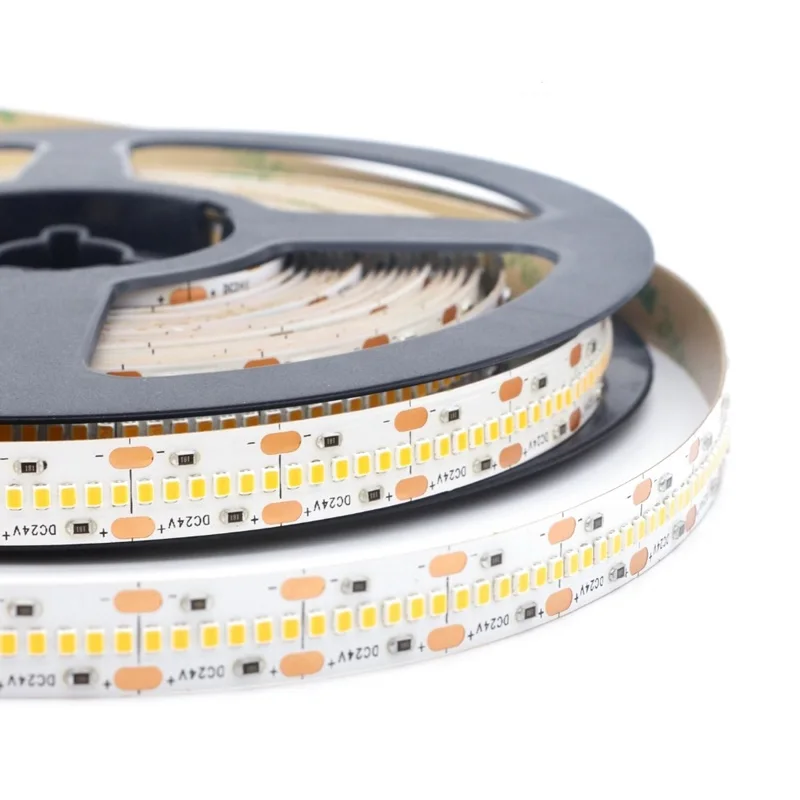
SMD2216 LED Strip Light
Main Model: FWX10T240C
LED QTY per Meter Option: 120/180/240/300/420
PCB Width Option: 5mm/10mm
Color Option: 2700K/3000K/4000K/5000K/6500K
CRI Option: 80/90
Input Voltage: DC12V/DC24V
Power per Meter: 9.6W/10W/14.4W/19.2W/20W/24W
IP Grade Option: IP20/IP54/IP65/IP67/IP68
Warranty: 5 years

Constant Current Long Run LED Strip Light
Main Model: FQX10T120D
Meter per Roll Option: 10m/20m/30m/50m
PCB Width Option: 10mm/12mm
Color Option: 2700K/3000K/4000K/5000K/6500K
CRI Option: 80/90
Input Voltage: DC24V/DC36V/DC48V
Power per Meter: 4.2W/7.2W/8.5W/12W
IP Grade Option: IP20/IP54/IP65/IP67/IP68
Warranty: 5 years
When to Choose 12V, 24V, or 48V LED Strip Lights
12V LED Strip Lights
12V LED strip lights operate at a lower voltage, meaning higher current for the same wattage. This design allows shorter cutting intervals—typically 25–50 mm—making them perfect for detailed installations like display shelves, furniture accents, and automotive interiors.
However, because low-voltage systems are more prone to voltage drop, runs longer than 5 m without power injection can lead to noticeable brightness loss. This is due to resistance in the strip’s conductors and wiring, a limitation more pronounced in 12V than in 24V or 48V systems.
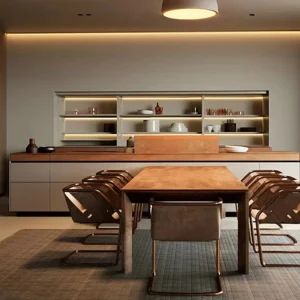
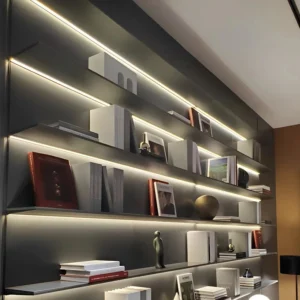
Best for:
Short runs up to 5 m without visible brightness loss
Decorative and accent lighting in furniture, shelves, and small spaces
Automotive, marine, RV, and solar-powered low-voltage systems
Pros:
- Low upfront cost and widely available drivers and dimmers
- Flexible installation due to short cutting intervals
- Strong compatibility with 12V battery-based systems
Cons:
- Noticeable voltage drop over longer runs without power injection
- Lower efficiency compared to higher-voltage systems for long distances
24V LED Strip Lights
24V LED strip lights double the voltage of 12V systems, cutting the current in half for the same power output. This reduces heat buildup and voltage drop, enabling runs up to 10 m without brightness loss.
The higher voltage means better efficiency and more stable illumination for applications like hotel cove lighting, retail shelves, and office accent lighting. While cutting intervals are typically longer (50–100 mm), limiting ultra-precise trimming, the overall balance between efficiency, cost, and brightness stability makes 24V the preferred choice for many commercial projects.
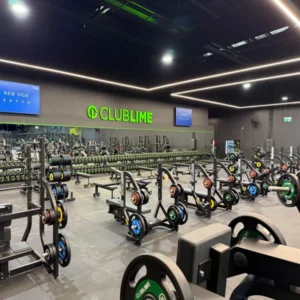
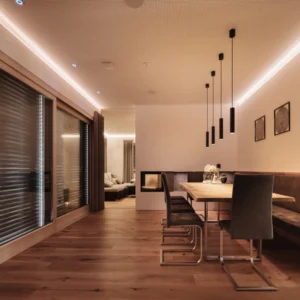
Best for:
Medium-length installations around 10 m
Commercial lighting in hotels, offices, and retail shelf displays
Spaces requiring consistent brightness and smooth dimming performance
Pros:
- Lower current reduces heat and improves efficiency over medium runs
- Balanced cost-performance ratio for most commercial applications
- Wide compatibility with professional-grade drivers and DMX/DALI controllers
Cons:
- Larger cutting intervals reduce flexibility in tight-fit installations
- Slightly higher initial cost than 12V systems
48V LED Strip Lights
48V LED strip lights offer the lowest current flow for the same wattage, dramatically minimizing voltage drop even over distances of 15–20 m or more. This allows uniform brightness across large-scale installations such as building facades, long coves, or outdoor architectural features without frequent power injection points.
The reduced wiring complexity and fewer power supplies lower installation and maintenance costs. However, cutting intervals are the longest (100–200 mm), limiting use in designs that require precision fitting. Also, compatible drivers and dimming systems are less common compared to 12V and 24V options.
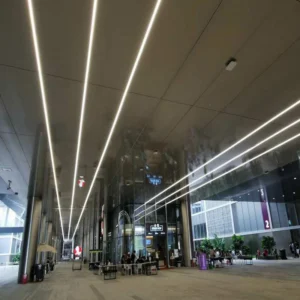
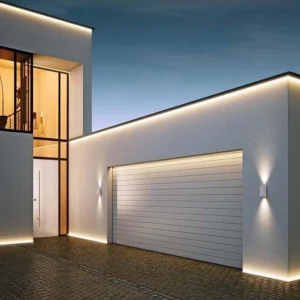
Best for:
Long-distance installations of 15–20m or more
Architectural facade lighting, ceiling coves, and large outdoor projects
Commercial or engineering projects aiming to minimize wiring and power feeds
Pros:
- Lowest current among the three voltages, delivering the most stable brightness
- High energy efficiency over long distances
- Fewer power supplies required, reducing wiring complexity and maintenance
Cons:
- Limited availability of compatible drivers and controllers compared to 12V/24V
- Long cutting intervals reduce customization options in tight spaces
LED Strip Voltage Selection Guide
| Voltage | Best For | Max Run Length | Typical Cutting Interval | Common Power Range (W/m) | Pros | Cons |
| 12V | Short runs ≤ 5 m; Decorative lighting; Automotive, marine, RV, solar systems | ~5 m | 25–50 mm | 4.8–14.4 W/m | Low cost; Short cutting intervals; High compatibility with 12V battery systems | Higher voltage drop over long runs; Lower efficiency for extended distances |
| 24V | Medium runs ~10 m; Hotels, offices, retail shelves; Consistent dimming | ~10 m | 50–100 mm | 7.2–19.2 W/m | Lower current reduces heat; Good cost-performance balance; Compatible with professional drivers | Longer cutting intervals than 12V; Slightly higher cost |
| 48V | Long runs 15–20 m+; Architectural facades, large outdoor projects | 15–20+ m | 100–200 mm | 10–20 W/m | Lowest current, minimal voltage drop; Highest efficiency over long runs; Fewer power supplies required | Limited driver/controller options; Longest cutting intervals |
*Max run length is based on standard installation without additional power injection.
Mistakes to Avoid When Choosing LED Strip Voltage
Choosing the wrong LED strip voltage can lead to brightness loss, overheating, or costly rework. Here are the most common mistakes to avoid:
Using 12V strips for long runs without power injection
12V LED strips are ideal for short runs (≤5 m). Using them for longer distances without adding extra power feeds will cause visible brightness drop.
Cutting the strip at the wrong position
Whether it’s 12V, 24V, or 48V, always cut at the designated copper pads. Cutting elsewhere can damage the circuit and make the strip unusable.
Matching the wrong power supply voltage
Never connect a 12V strip to a 24V or 48V power supply (or vice versa). This can instantly burn out the LEDs.
Learn more about why mismatching voltages can damage your LEDs in our detailed guide: Plugging 12V LED Strips into a 24V Power Supply.
Ignoring voltage drop calculations
For runs over 5 m (12V), 10 m (24V), or 20 m (48V), calculate voltage drop in advance and plan for power injection or higher-voltage systems.
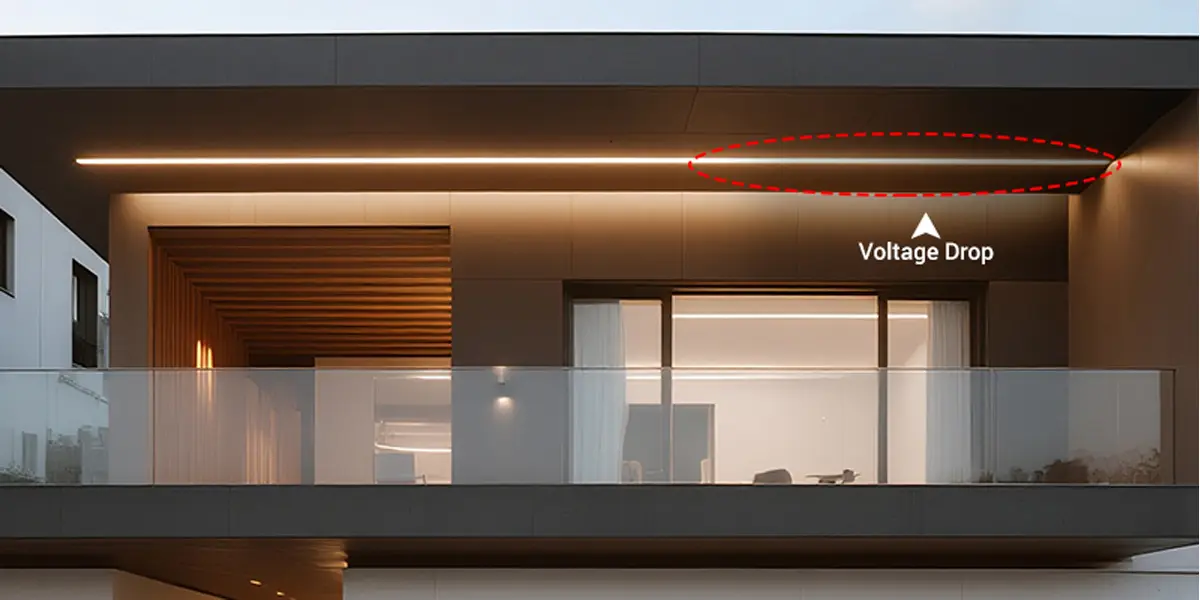
Overloading the power supply
Always choose a driver with at least 20–30% more capacity than the total wattage of your LED strips.
FAQ – LED Strip Voltage Selection
No. Supplying higher voltage than the strip is rated for will overdrive the LEDs, causing overheating, damage, or instant failure. Always match the strip voltage with the power supply voltage.
For most outdoor installations, 24V or 48V LED strips are preferred because they allow longer runs with less voltage drop, which is important for large-scale architectural or facade lighting.
12V: up to 5 m without power injection
24V: up to 10 m without power injection
48V: up to 15–20 m without power injection
Longer runs require additional power feeds or parallel wiring.
12V LED strips are best for automotive, marine, and RV applications because they are directly compatible with 12V battery systems. If you plan to connect multiple 12V LED strips to one power supply, read our step-by-step guide: Can You Connect Multiple 12V LED Strips to One Power Supply?
Not necessarily. Brightness depends on LED type, density (LEDs per meter), and wattage. Voltage mainly affects run length and efficiency.
Conclusion
Choosing the right LED strip voltage affects not only the installation results but also brightness consistency, energy efficiency, and maintenance costs.
Short runs & precision lighting: Go for 12V for flexible cutting and compatibility with low-voltage battery systems.
Medium runs & commercial spaces: Choose 24V for a balanced mix of performance and cost.
Long runs & large-scale projects: Opt for 48V to minimize voltage drop and simplify wiring.
For the best outcome, consider run length, cutting requirements, power layout, and safety before deciding—this ensures the optimal balance between performance, cost, and maintenance.
To estimate your project’s energy use and efficiency, check our complete guide: How Much Electricity Does an LED Strip Light Use?

